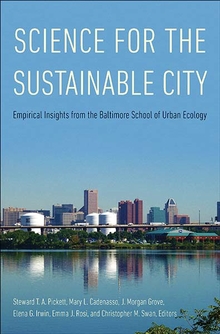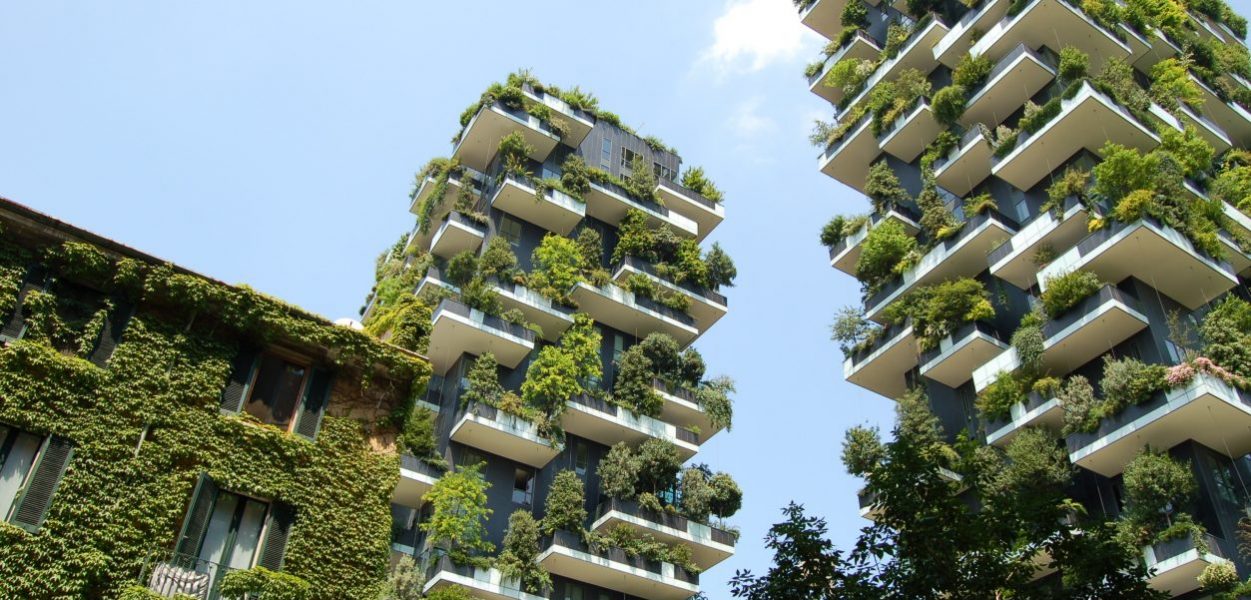Urbanization and Sustainability
Steward Pickett—
Sustainability has become one of the touchstones of the twenty-first century. As the human inhabitants of the planet consume an ever-larger share of the Earth’s resources and increasingly tax its capacities to recycle wastes and deal with contaminants, sustainability has become a powerful image. But it is much more than an urgent spur to the imagination of policy makers, businesses, and everyday people. Sustainability has come to shape how we approach the problems of human excess at all scales, from our towns, through regional landscapes, to the entire connected globe.
Sustainability is a broad concept, but is almost universally taken to mean that decisions here and now should not harm the ability of generations to come or people elsewhere to benefit from a healthy environment, a vibrant and equitable society, and a supportive economy. This portfolio of desires is often referred to as the three pillars of sustainability, or the “three E’s,” for environment, equity, and economy. Sustainability that fails to provide for all three of the desiderata is no sustainability at all.
The importance of sustainability has been enshrined by the United Nations in a summary of seventeen Sustainable Development Goals. This document was hammered out over several multi-national conversations and so represents the best and most inclusive vision of sustainability. Although the word development appears in the statement, it is clear that residents of both developed and developing countries will benefit from progress toward these goals. Although only one goal—number 11—explicitly mentions urban or city, it turns out that urban areas are where so many of the goals will succeed or fail.
Urbanization is one of the largest changes across the world. Urbanization refers to the conversion of rural populations to town, suburban, and city dwellers. The first trend—conversion of people from rural to urban livelihood and lifestyle to the more urban forms of production and consumption—has, in only a few decades, brought the world’s population from majority rural to majority urban. Projections are that, by 2030, more than 60% of the world’s people will live in cities. Indeed, most of the cities that they will inhabit do not yet exist.
The term urbanization also refers to the conversion of wild, agricultural, pastoral, and rural lands to the more densely built and infrastructurally networked settlements that can together be called urban. The amount of urban land across the world is less than 5% of the total. This may not sound like much, but that proportion of the Earth’s cover demands 70% of the human energy use and generates 70% of the gasses that drive global warming. At the same time, cities are also the source of most of humanity’s economic output and a seat of much of the innovation that drives culture and technology.
These figures and trends point to both the current and the growing significance of the urban estate for the human population and for the health of the entire planetary ecosystem. One of the biggest questions facing people and society is “How can we boost the contribution of cities and other urban places to local, regional, and global sustainability?”
One answer is that it is imperative to understand how cities, suburbs, exurbs, and urbanized regions function as systems. They are, in fact, a particular kind of system—a social-ecological system. Culture, politics, institutions, and technologies on the one hand, and the biological workings based on soil, waters, air, and biodiversity on the other, must be understood as jointly making up our urban estate. Ecological processes are going on beneath and adjacent to our concrete cladding and also contribute to the environmental pillar of sustainability via yards, parks, abandoned and neglected lots and slivers of right-of-way, urban wetlands, and streams (including those out of sight in culverts).
Knowledge of this ecology of cities has been accumulating in the United States on a significant scale only since the mid-1980s. This is a remarkably short lifespan for an American social-ecological science of the city. This neglected but crucially important knowledge base for sustainability was given a major boost by the establishment of the Baltimore Ecosystem Study (BES) in 1997. This pioneering study, often partnered with a sibling project in Phoenix (the Central Arizona-Phoenix, Long-Term Ecological Research site), has contributed new data and ways to advance sustainability in the global urban world.
Two examples highlight the novel ways to approach urban sustainability. First, well-meaning regulations may have unintended environmental consequences. Environmental economists working in BES amassed a detailed spatial data set on the history of suburban subdivision in the outer counties of metropolitan Baltimore. They discovered that the rules for the size of subdivision and the way that developers responded to those rules actually fragmented the exurban landscape. More smaller and widely scattered subdivisions emerged than expected.
Second, social and environmental legacies affect trajectories toward sustainability. A common legacy in American cities is racial and class segregation. BES researchers, using analysis of environmentally negative zoning variances in the past, documented that racial segregation is more than just correlation. The negative environmental attributes often associated with minority and impoverished neighborhoods were the result of active decision making through environmentally unfavorable zoning variances. Now some of those attributes are associated with vulnerability to the high extreme temperatures of local urban heat islands, or lack of access to well-managed green spaces.
These two examples are complemented by other discoveries by the Baltimore Ecosystem Study. It has become clear that we must know how urban areas work as hybrid social-ecological systems, not as separate ecological versus constructed systems. Furthermore, sustainability is not just about the countryside. Biologically-dominated ecosystems within and near cities, as well as the hybrid social-biological ecosystems of cities themselves, must be called into service for sustainability.
Steward Pickett is distinguished senior scientist, Cary Institute of Ecosystem Studies, and director emeritus, Baltimore Ecosystem Study.
Further Reading:





